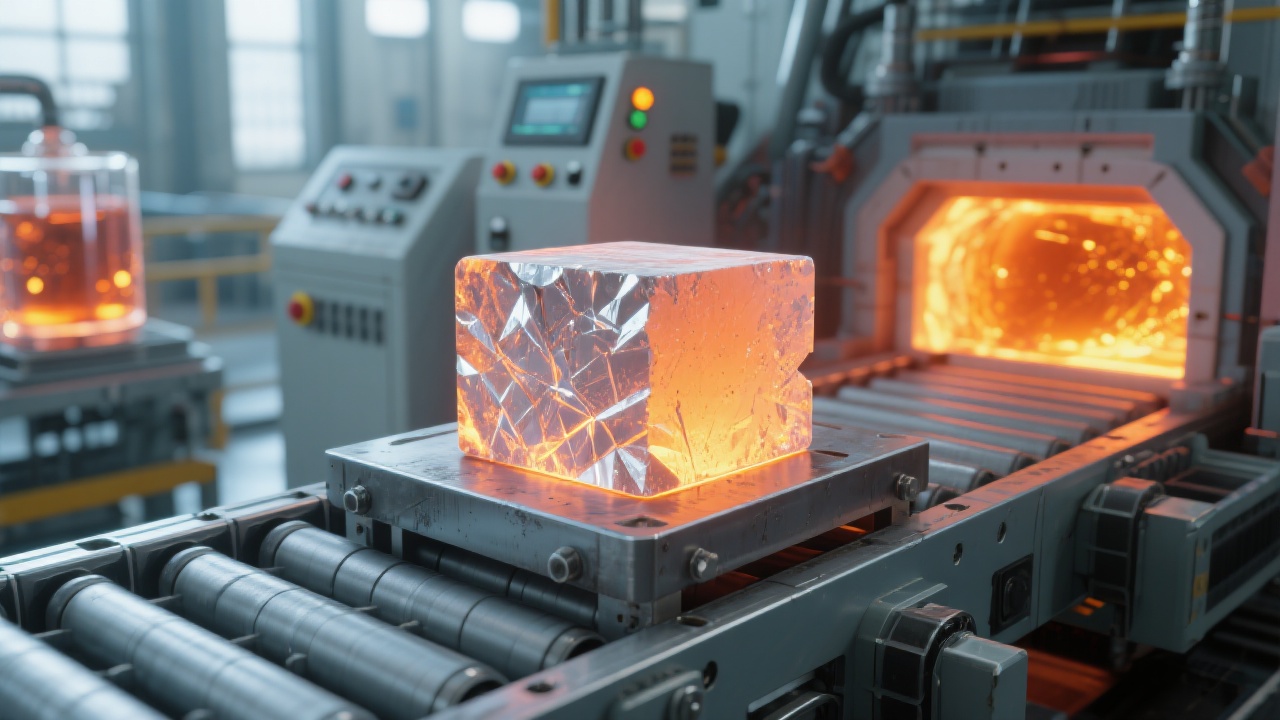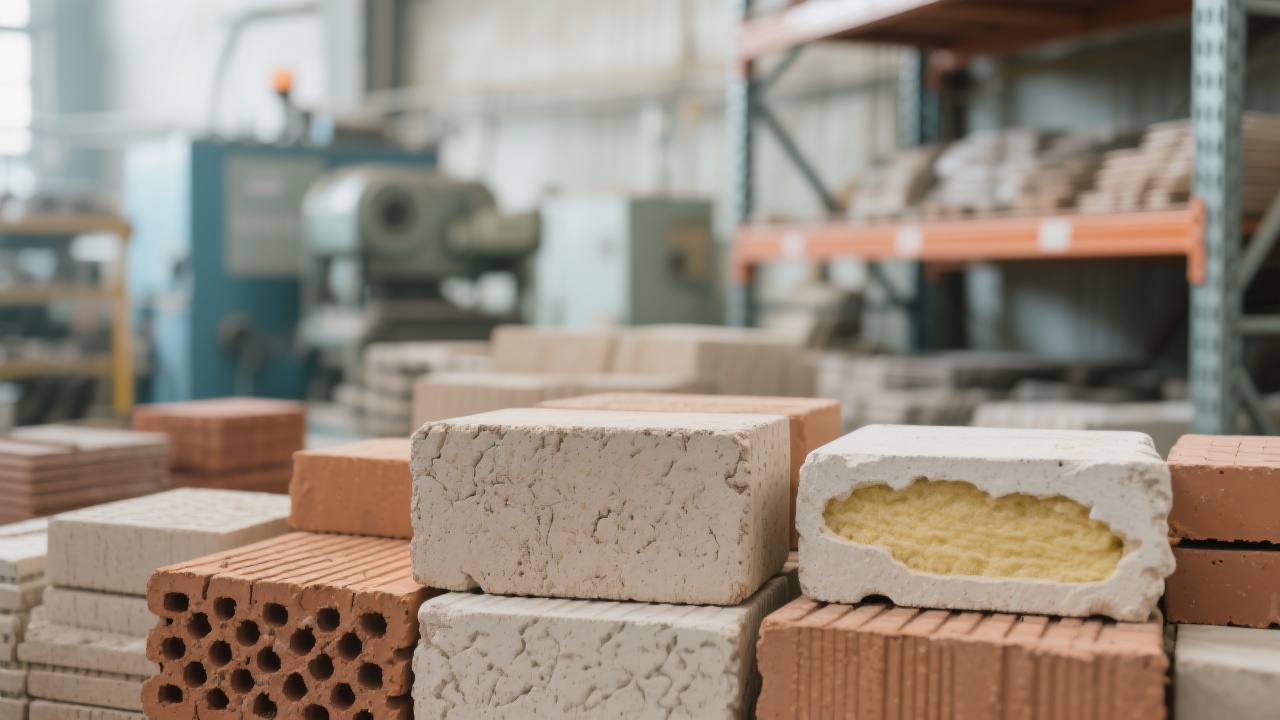
In the chemical industry, high-temperature processes are quite common, such as chemical reaction kettles and high-temperature furnaces. The selection of refractory materials in these processes is crucial, as it directly affects production efficiency, product quality, and operational costs. However, many purchasers often make mistakes in this regard. For instance, they might choose refractory materials with insufficient refractoriness, which leads to frequent replacements and increased costs, or materials with poor chemical stability that react with chemicals in the process, affecting product quality.
Corundum bricks are a type of high-quality refractory material widely used in high-temperature chemical processes. The main component of corundum bricks is Al₂O₃, with a content usually ranging from 90% to 99%. This high Al₂O₃ content endows corundum bricks with excellent physical and chemical properties.
Corundum bricks can be classified into sintered corundum bricks and fused corundum bricks according to the production process. Sintered corundum bricks are produced by sintering high-alumina raw materials at high temperatures. They have good density and mechanical strength. Fused corundum bricks, on the other hand, are made by melting raw materials in an electric arc furnace and then casting them. Fused corundum bricks have higher purity and better thermal shock resistance.

Corundum bricks have extremely high refractoriness, generally above 1800°C. This means they can maintain stable physical and chemical properties in high-temperature environments, ensuring the normal operation of equipment. For example, in some high-temperature furnaces with temperatures reaching 1600 - 1700°C, corundum bricks can still work stably for a long time without significant deformation or damage.
Due to their high hardness and density, corundum bricks have excellent abrasion resistance. In high-temperature processes where there is a lot of material movement and friction, such as in some powder conveying systems in high-temperature furnaces, corundum bricks can effectively resist abrasion, extending the service life of the equipment.
Corundum bricks have good chemical stability and can resist the corrosion of various chemicals. In chemical reaction kettles where acidic or alkaline substances are involved, corundum bricks can prevent the reaction between the equipment and chemicals, protecting the equipment and ensuring product quality. For example, in a chemical plant producing a certain acidic chemical, the use of corundum bricks in the reaction kettle reduced the corrosion rate of the equipment by more than 50%.
In chemical reaction kettles, corundum bricks are mainly used as lining materials. Their high refractoriness and corrosion resistance can ensure the normal operation of the reaction kettle in high-temperature and chemical environments, improving production efficiency and product quality. In high-temperature furnaces, corundum bricks can be used for furnace walls, furnace bottoms, etc. Their excellent thermal insulation performance can reduce heat loss, save energy, and lower production costs.

A chemical company in Europe was facing problems with its high-temperature furnace. The original refractory materials had low refractoriness and poor corrosion resistance, resulting in frequent equipment failures, high maintenance costs, and a product rejection rate of about 10%. After replacing the refractory materials with corundum bricks, the situation improved significantly. Within three months, the product rejection rate dropped to less than 2%, and the maintenance cost was reduced by about 30,000 euros per year.
| Refractory Materials | Refractoriness | Abrasion Resistance | Corrosion Resistance | Cost |
|---|---|---|---|---|
| Corundum Bricks | Above 1800°C | Excellent | Good | Relatively High |
| Clay Bricks | About 1580 - 1770°C | Average | Poor | Relatively Low |
| High - Alumina Bricks | 1770 - 2000°C | Good | Average | Medium |
As can be seen from the table, corundum bricks have obvious advantages in refractoriness, abrasion resistance, and corrosion resistance compared with other refractory materials. Although their cost is relatively high, considering their long service life and the reduction in maintenance and replacement costs, they are a cost - effective choice in the long run.

When purchasing corundum bricks, you first need to determine your specific process requirements, such as the maximum temperature of the equipment, the type of chemicals involved, etc. If the temperature is extremely high and there are strong corrosive substances, fused corundum bricks may be a better choice. If the cost is a major concern and the requirements are not extremely strict, sintered corundum bricks can be considered. At the same time, you also need to pay attention to the quality of the products, such as checking the density, hardness, and chemical composition of the bricks.
In conclusion, corundum bricks, with their high refractoriness, excellent abrasion resistance, and corrosion resistance, can provide reliable solutions for chemical high - temperature processes, improve production efficiency, and reduce costs. If you are still struggling with the selection of refractory materials, click here to learn more about how corundum bricks can meet your needs.
Do you encounter similar problems in your industry? You can tell me the specific scenario, and I'll send you 3 solution cases from the same industry.

